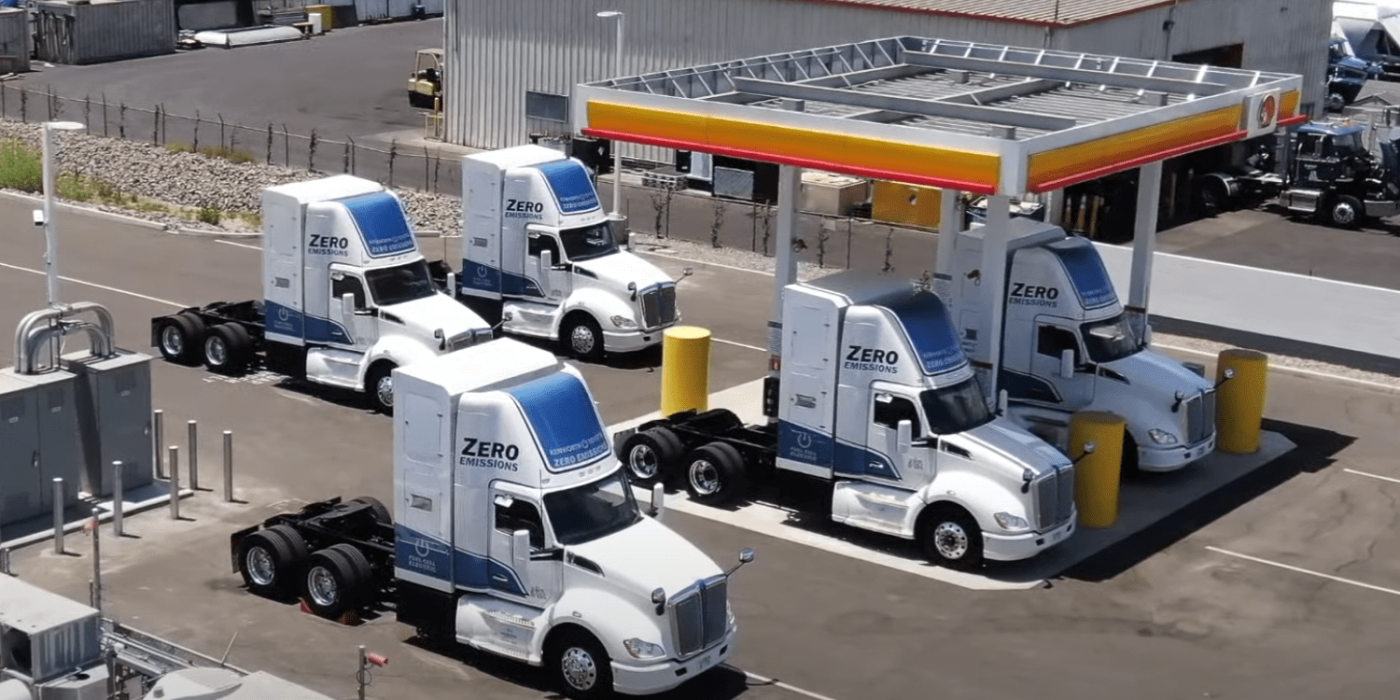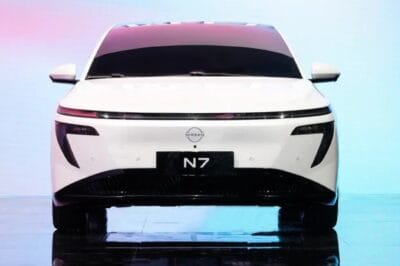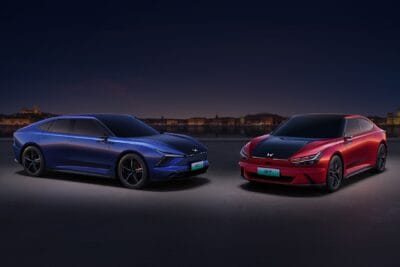Port of Los Angeles deploys H2 fuel cell trucks
The Port of Los Angeles is now deploying five new hydrogen fuel cell vehicles and the opening of two hydrogen fueling stations with partners that include Toyota, Kenworth Trucks and Shell.
The $82.5 million Shore-to-Store (S2S) project will trial the vehicles for the next 12 months as part of a large-scale, multiyear demonstration designed to advance the Port’s Clean Air Action Plan goals. The California Air Resources Board (CARB) is supporting the project with a matching grant of $41.1 million. Project partners are contributing the remaining $41.4 million in financial and in-kind support. More than a dozen public and private sector partners and involved in the year-long demonstration of the zero-emissions Class 8 trucks.
Following this deployment of the five heavy-duty FCEV, the project will be expanded to include five more hydrogen-fueled heavy-duty trucks, two battery-electric yard tractors, and two battery-electric forklifts. The zero-emission vehicles will carry out local pickup and delivery and drayage near the Port as well as short regional haul applications inland. The aim is for the partners to study the technical feasibility of hydrogen-fueled tractors and battery-electric cargo handling equipment under rigorous conditions – The Port of Los Angeles is North America’s leading seaport by container volume and cargo value, facilitating $259 billion in trade during 2020.
Toyota Motor North America has designed and built the powertrain’s fuel cell electric power supply system, while Kenworth Truck Co has designed and built the Class 8 trucks with Toyota’s fuel cell electric system. Refuelling infrastructure has been built by Shell Oil Products US which will operate the project’s two new high-capacity hydrogen fueling stations in Wilmington and Ontario. Air Liquide is also participating as a fuel supplier.
Responsible for operating the trucks are Toyota Logistics Services (TLS), UPS, and trucking companies Total Transportation Services Inc. (TTSI) and Southern Counties Express (SCE). The Port of Hueneme will partner on drayage runs and serve as the site for testing the zero-emissions yard tractors.
Another central aim of the project is to measure the reduction of nitrogen oxide, particulate matter, and greenhouse gas emissions, as well as other pollutants in the area throughout the project. The National Renewable Energy Laboratory will collect and analyze project data, while the Coalition for a Safe Environment is responsible for representing the communities living close to the ports and related trucking and warehouse operations, many of which are low-income areas disproportionately impacted by air pollution from vessels, rail, trucking and off-road cargo handling equipment. The South Coast Air Quality Management District (AQMD), will serve as a project advisor.
The Port of Los Angeles Executive Director Gene Seroka said: “Transporting goods between our Port and the Inland Empire is the first leg of this next journey toward a zero-emissions future.” Bob Carter, Executive Vice President, Sales, Toyota Motor North America extrapolated: “By utilizing this technology, port operators like our own Toyota Logistics Services (TLS) can utilize a zero-emissions and scalable solution for CO2 reductions.”
With a number of zero-emission commercial vehicle government policies and projects having been introduced just over the last 12 months, the busy port is the centre of a flurry of decarbonisation projects. To give an idea of the velocity at which this area and its heavy-duty transport sectors are decarbonising, the following projects were all announced just last month in May: Nikola Motors announced it would be trialling battery-electric and fuel cell trucks at ports in LA and Long Beach with a pilot project. Towards the centre of the state in the San Joaquin Valley, WattEV is to build a pilot electric truck stop positioned near logistics fulfilment centres run by Amazon and Walmart that will feature a solar micro-grid with battery storage, plus grid energy from PG&E. On the hydrogen front, Hyzon Motors announced plans to enter into a joint venture with Raven SR to build waste-to-hydrogen hubs, starting with two in California. Volkswagen’s Electrify America is also contributing to zero-emission heavy-duty vehicle infrastructure and specifically in the Port area. As part of its payment obligations resulting from the Diesel Scandal, the Volkswagen subsidiary Electrify America will focus resources on regional shipping and help encourage the electrification of equipment and vehicles.
While this is all happening at an extraordinary speed, the task of decarbonising the Port is also enormous: The Port of Los Angeles is the nation’s busiest port complex and served by a fleet of more than 18,000 drayage trucks. Covid-19 did not slow down activity at the port, in fact, the Ports of Los Angeles and Long Beach are claiming cargo records for the last seven months, with shipping volumes up 46 and 43 per cent, respectively, year-over-year. The Port of Los Angeles noted that the San Pedro Bay port complex operations and commerce facilitate one in nine jobs across the counties of Los Angeles, Orange, Riverside, San Bernardino and Ventura.





0 Comments